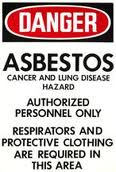Posted by admin under Air Monitoring, Asbestos, Building Survey, EPA, industrial hygienist, Lead, Risk, Training
Comments Off on Asbestos Building Inspectors (AHERA)
If you have a building built pre 1985 (I know this date can be different, but I’m playing it safe) before bidding a project you need to have an asbestos survey performed, called a building inspection. Honestly, they usually aren’t done before bidding. SOMETIMES, they’re performed before starting the work (not good).
Honestly, they usually aren’t done before bidding. SOMETIMES, they’re performed before starting the work (not good).
How do you find a good building inspector? …Google?, Yellow pages (who does that anymore?) Abatement contractor?
Whomever you hire, make sure they have a current AHERA Building Inspector Certificate. This is a Federal program maintained by TSCA Title II EPA AHERA/ASHARA Model Accreditation Program. This is your only recourse if something goes wrong. It doesn’t matter if have have a PhD, CIH, ROH, CSP and MBA, they MUST have a current AHERA Building Inspector Certificate.
Here are some things to consider:
- Does the Building Inspector have a current certificate?
- Will they sample for asbestos?
- Which lab will they use for analysis? Their own? (not always a bad thing)
- Which areas are they unable to access in the building?
- Will they check for leaded paint?
- Will they take pictures?
- How long till you will get the results & report?
- Will they write a report?
- Are they capable of performing air monitoring? (worth asking, but not a deal-breaker)
- Will they look back at previous records / management plans?
- Cost?
Good luck in your search. As most things, a good referral from a friend is probably a great starting spot.
Posted by admin under Air Monitoring, Asbestos, Building Survey, Hazard Communication, Management
Comments Off on What if you’ve had asbestos exposure?
 Occasionally (actually, far too often), I hear from a subcontractor who was told by the General Contractor (or owner) there is no asbestos onsite. Then, after they have been working for a month they find out it actually IS asbestos, and they were disturbing it. What do you do?
Occasionally (actually, far too often), I hear from a subcontractor who was told by the General Contractor (or owner) there is no asbestos onsite. Then, after they have been working for a month they find out it actually IS asbestos, and they were disturbing it. What do you do?
The first thing to do is stop work. Do not try to clean it up. Call an abatement contractor. They will identify the asbestos onsite, clean it up, and provide an airborne clearance test.
Next, you will need to provide awareness training (or better, let the abatement company provide it). Ideally this will occur on the day you start back working. Train everyone onsite about asbestos.
Finally, you (as the safety manager), need to identify and characterize the exposure to the employees. It should probably be a formal letter written to the owner, general contractor and employees.
Here are some tips on writing the letter:
- include employee names, work hours, type of work, PPE worn, and locations they were working
- describe the asbestos. Amount found, locations, type, estimated amount disturbed.
- describe remedy process and steps taken. Names of GC, owner, abatement company, airborne levels found. Who was trained afterwards.
- describe how things will change in the future. Here’s a tip: Â any building before 1985 WILL have a building survey performed for asbestos….in writing.
Really, one exposure to asbestos is probably* not enough to contract a disease (asbestosis, or mesothelioma). It will take 15-30 years for symptoms to appear. But, it might be worth the “goodwill” to send affected employees into a occupational health doctor for a check up. The physician will reassure the employee and may provide some comfort.
*asbestos is a carcinogen. Greater exposure = greater chance of cancer. no amount is safe.
 Honestly, they usually aren’t done before bidding. SOMETIMES, they’re performed before starting the work (not good).
Honestly, they usually aren’t done before bidding. SOMETIMES, they’re performed before starting the work (not good).